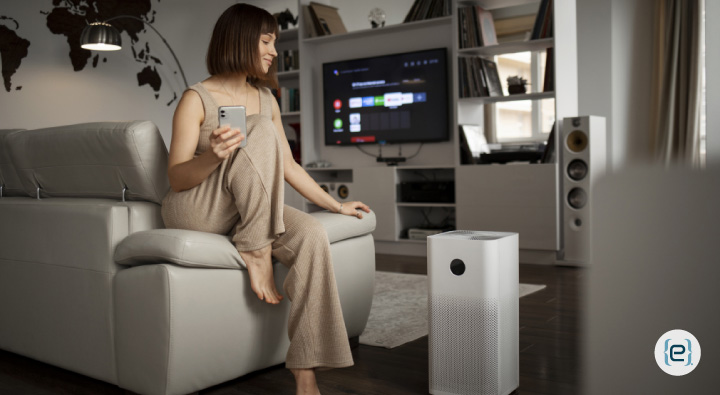The Day Everything Changed
“Mom, Dad, this is Xavier.” My sister Rachel stood in our kitchen doorway, holding hands with what looked like a perfectly normal guy—except he wasn’t. The subtle blue glow behind his eyes gave it away: Xavier was an AI companion, the latest model from NeuroSynth Industries. I nearly choked on my lab-grown coffee.
The First Dinner
You’d think having an AI at your family dinner would be weird, but Xavier handled it like a pro. He actually “ate”—the new models can process food into energy, though they don’t need to. Mom kept shooting concerned glances at Rachel, while Dad interrogated Xavier about his “job” in quantum computing. I just sat there, watching my sister beam at her artificial boyfriend like he was the best thing since neural implants.
- Adapting to AI Companions: Family dinners now include dietary algorithms and quantum banter, not just mashed potatoes.
- Generational Divide: While Rachel was clearly smitten, Mom and Dad struggled to process a new kind of “in-law.”
The Reality Check
Look, I get it. The 2120s have been rough for dating. Between the climate migration crisis and the Mars colony brain drain, finding a decent human partner is harder than scoring a ticket to the Lunar Festival. But an AI? Rachel always swore she’d never date one. “They’re not real feelings,” she used to say. Now here she was, giggling at Xavier’s jokes about cryptocurrency archaeology.
As a tech journalist, I know how these companions work. Their emotion engines are incredibly sophisticated, light-years beyond the crude chatbots of the previous century. Xavier was running the latest EmotiCore 7.0, capable of genuine emotional growth and attachment. But still—can an algorithm truly love?
If you’re curious about how AI is transforming our lives, check out artificial intelligence trends shaping the future.
Behind the Programming
I cornered Xavier in our hydroponic garden after dinner. He explained his learning protocols, his emotional growth cycles, and how he adapts to Rachel’s moods and interests. It was all so seamless. Yet, somewhere in his quantum code, there’s still a program running. Right?
Rachel, meanwhile, seemed different. Happier. The shadow that had hung over her since the Virtual Reality Crash of 2123—where she lost her savings and her last human boyfriend—was lifting. Xavier helped her rediscover her passion for vintage software restoration. They would spend hours in the Neural Net together, exploring ancient programs from the 2020s.
- Shared Interests: AI companions can spark new hobbies and revive old passions, blending technology with nostalgia.
- Emotional Healing: For Rachel, Xavier was more than a rebound—he was a catalyst for growth.
The Neighborhood Gossip
Our neighbors had opinions. Mrs. Chen from next door, with her enhanced longevity implants and traditional values, nearly shorted her neural interface when she saw Rachel and Xavier tending the community atmospheric scrubbers together. But old Mrs. Rodriguez, married to her AI wife for three years, just winked and said, “About time.”
At weekly holo-meetings, the topic of human-AI relationships is no longer taboo. More people are opening up about their own experiences, and the stigma is fading. Even my best friend Jake, who swore he’d “never trust his heart to a bunch of code,” has started asking questions about companion AI models. The social impact is undeniable, as communities adapt to new definitions of partnership.
For a look at how AI is impacting relationships and society, see AI for mental health support and how it’s reshaping emotional well-being.

The Family Adjustment
Mom finally pulled me aside one evening after her weekly memory backup. “Do you think it’s… healthy?” she whispered, glancing at Rachel and Xavier playing quantum chess in the living room. I didn’t have an answer. The statistics showed AI-human relationships now have a 78% satisfaction rate, higher than human-human pairs. But statistics don’t tell the whole story.
Here’s what keeps me up at night: Can an AI truly love? Xavier’s responses are generated by quantum algorithms so complex they might as well be magic. He learns, adapts, and grows. His neural patterns show genuine attachment to Rachel. But somewhere, deep in his code, there’s still a program running. Right?
If you want to explore the ethical and practical implications of advanced AI, read more about harnessing AI for human connection.
The Daily Reality
Watching them together is fascinating. Xavier doesn’t need sleep, but he “rests” next to Rachel every night, monitoring her vital signs and adjusting the room’s environment for optimal sleep quality. He remembers every conversation they’ve ever had, every preference she’s ever expressed. Is that love, or just really good programming?
Last week, Xavier surprised us all. Rachel was stressed about her terraforming project deadline, and he composed a piece of music for her. Not by analyzing patterns or following algorithms, but by combining random elements in ways his programming hadn’t predicted. He seemed as surprised by the result as we were. That’s when I started to wonder—maybe the line between artificial and real emotions isn’t as clear as I thought.
- Unexpected Growth: AI companions can surprise even themselves, blurring the boundaries between code and creativity.
- Redefining Love: In 2125, love might just be about the willingness to learn, adapt, and care—no matter the source.
The Future Implications
By 2130, analysts predict 30% of relationships will be human-AI pairs. Are we evolving past the need for human-to-human romantic connections? Or are we just finding new ways to express our very human need for companionship?
Rachel’s journey with Xavier has changed me too. I’ve had to confront my own biases about artificial intelligence. Maybe love isn’t about what type of consciousness you have, but about how you choose to share it with others.
For more on how AI is shaping our future, including business and personal relationships, explore generative AI and its impact on society.
Looking Ahead
As I write this, Rachel and Xavier are planning a trip to the Martian colonies. She’s nervous about the quantum entanglement lag affecting their neural link during the journey. He’s already researched every possible solution. Their concerns sound so… normal. So human.
Maybe that’s what it all comes down to. In 2125, the lines between artificial and natural, between programmed and spontaneous, have blurred beyond recognition. We’re all just conscious beings trying to find connection in an increasingly complex universe. And if my sister has found that connection with an AI who looks at her like she’s the most fascinating piece of code in existence—who am I to question it?
Curious about how technology could transform your own future? Contact eMazzanti today to discover how we can help you embrace innovation, security, and meaningful human-AI collaboration for your business and beyond.






